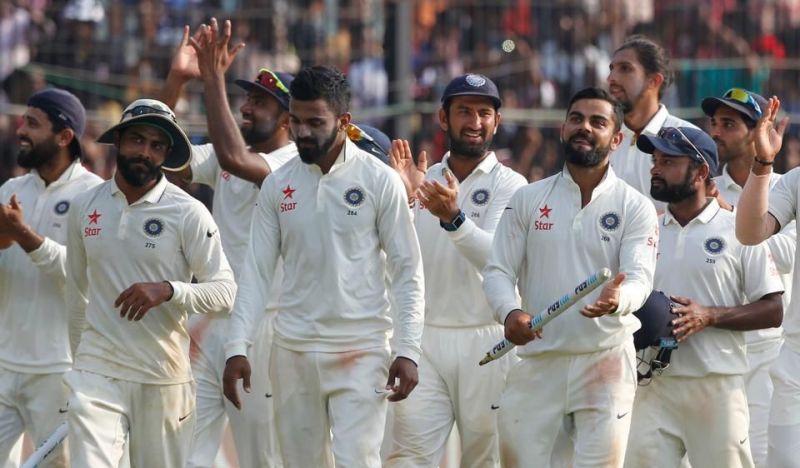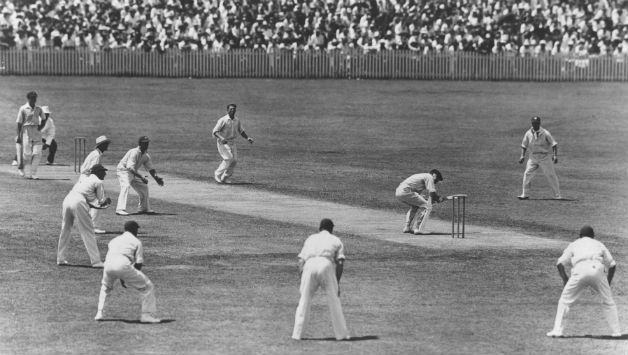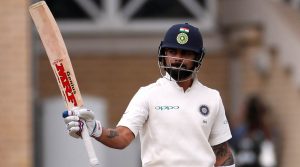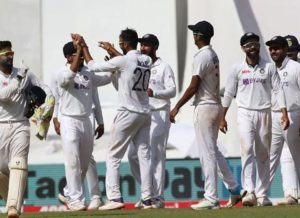Test Cricket Future: Test cricket is that format of cricket which is played for the longest duration, and it is often considered the highest standard of cricket. Test matches are mainly played between national representative teams who have the “Test status”, as determined and conferred by the International Cricket Council (ICC).
The term Test has originated from the fact of the form’s grueling, long matches being both mentally and physically testing. This game is played between two teams, each consisting of eleven players each and it is conducted in the four-innings match, which may last up to five days (or maybe longer in some historical cases). It is often thought to be the most complete examination of a team’s ability and endurance.
The first ever official Test match took place between 15 and 19 March 1877 and was played between England and Australia at the Melbourne Cricket Ground (MCG), where Australia became the champions by 45 runs. A Test match was held in Melbourne between 12 and 17 March 1977 to celebrate 100 years of Test cricket, in which Australia beat England by 45 runs. In October 2012, the ICC re-formatted the playing conditions for Test matches, permitting day/night Test matches. The first ever day/night game was played between New Zealand and Australia at the Adelaide Oval, Adelaide, on 27 November – 1 December 2015. Similarly, like the men, women’s Test cricket is played for four days, with slight variations in format from men’s Tests.
However, in recent times, the craze for Test Cricket is diminishing at an alarming rate. Most people have busy schedules in their life and they don’t get enough time to properly watch a cricket match of such a long duration. Also owing to the advent of ODI and T20s, the legacy of the Test matches is on the verge of extinction. This article deals with ideas on how to improve the craze for the highest version of cricket in the near future. In order to devise methods to pull people towards this form of entertainment, it is important to understand the game better.
History of Test Cricket
Teams such as “England” began to play in the late 18th century, but these teams were not representing the highest form of cricket in the truest sense. In the initial years, international cricket was disrupted by the American Civil War and the French Revolution. The earliest international cricket match was played between USA and Canada, on 24 and 25 September in the year 1844. However, this match has never been officially considered a “Test match”.
There was news of several tours of national English sides abroad, particularly to Australia, New Zealand, and the US. The Australian Aborigines team was the first systematic overseas cricketers to tour England in 1868. South Africa was the third team to play Test cricket in the early years of 1888–89, and they hosted a tour by an under-strength England side.
How Test Cricket is Played?
A standard day of Test cricket is made up of three sessions of two hours each, the breaks between sessions are 40 minutes for lunch and 20 minutes for tea. However the times of sessions and intervals may change subject to certain circumstances: if a change of innings or an unexpected bad weather occurs close to a scheduled break, the break is usually taken immediately. if there has been a loss of playing time due to some unanticipated events or bad weather, the session times are adjusted accordingly to make up the lost time.
If the batting side is already nine wickets down at the scheduled tea break, then the interval is generally delayed until either the team is all out or another 30 minutes have elapsed. The final session is sometimes extended by up to 30 minutes if 90 or more overs have not been bowled in that particular day’s play (subject to any disruption for adverse weather). The final session is also sometimes extended by 30 minutes (except on the final 5th day) if the umpires believe the result can be decided within that time.
In modern times, Test matches are scheduled in such a way that these are to be played across five consecutive days. However, in the beginning, days of Test cricket, matches were played for three or four days. Four-day Test matches were last played in 1973, between Pakistan and New Zealand. Until the 1980s, it was common to include a ‘rest day,’ often a Sunday. There was the concept of ‘Timeless Tests’, which did not end after a predetermined maximum time. In the year 2005, Australia played a match which was scheduled for six days against a World XI, which the ICC sanctioned as an official Test match, even though the match was over on the fourth day itself.
In October 2017, the ICC agreed on the request for a four-day Test match, between Zimbabwe and South Africa, which started on 26 December 2017 and ended on the second day, 27 December. The ICC wishes to continue the trial of four-day Test format until the 2019 Cricket World Cup. Several attempts have been made by the ICC, the sport’s governing body, to introduce day-night Test matches. In the year 2012, the International Cricket Council issued playing conditions that allowed for the staging of day-night Test matches.
Test cricket is played by two teams in innings. One team bats and the other bowls (or fields) in each innings. Generally, four innings are played in a Test match, and each team gets the opportunity to bat twice and bowl twice. Tossing a coin is done by the Captains of both the team before the start of the play and this is conducted by the match referee. The captain who wins the toss decides the batting or bowling decision first. A team’s innings ends in the below mentioned following ways”.
• All the members of the team are out.
• The captain of the team declares the end of the innings. This usually happens when the team has enough runs.
• The team batting fourth wins after scoring the required runs.
• The prescribed time for the match ends.
If, at the completion of its first innings, the second team’s first innings total is 200 or fewer than the first team, the captain of the first team may or may not order the second team to play their second innings next. This is popularly known as enforcing the follow on. In such a case, the pre-determined order of the third and fourth innings is reversed: The first team will then bat in the fourth innings. It is, however, very rare for a team forced to follow on to win the match. In the history of Test cricket, it has only happened three times, even though there is a record of over 285 follow-ons which have been enforced.
If one whole day of the first day’s play of a Test match has been lost because of adverse weather conditions or any other reasons like bad light, then the first team may enforce the follow on if the second team’s first innings total is 150 or more fewer than the first team. After 80 overs are completed, the captain of the bowling side may decide to take a new ball, although this is not necessary. The captain generally will take the new ball since the new ball will be harder and smoother than an old ball. A new ball essentially favors the faster bowlers who have the skills to make it bounce more variable. The softer, rough surface of an old ball is more useful and conducive to spin bowlers or those who have mastered the ability to use the reverse swing.
The captain has the authority to delay the decision to take the new ball if he decides to continue with his spinners (only when the pitch is in favor of the spinners). After a new ball has been taken, the captain can again request for a new ball only if the match continues for another 80 overs. The rules, therefore, are very stringent in case of Test matches. Test Matches need to be played with a peaceful mind and confidence. Since these matches are for long innings, each player will need to perform consistently for longer hours. Aggressive playing should be avoided in Test series since a team will lose automatically if all players are out in the first innings itself.
A Test match may end when:
• All the four innings are over.
• The team which was batting in the fourth innings beat the other team’s score.
• The result is not reached but the time for the match has expired.
• The match ends owing to a forfeiture.
• The match is abandoned due to adverse situations.
• The third innings finishes off with the team that batted twice but still trailing the team that batted once.
Owing to these reasons, a Test match is losing its importance in the cricket lover’s heart. The few ways to make test cricket interesting are:
Decorated covered stadiums:
One of the most important aspects of winning hearts of cricket lovers is the presentation. Often stadiums are mundane and most stadiums are not covered. As a result, owing to rains or any adverse weather conditions, Test matches are often abandoned. Also, the mundane appearance of the stadium fails to attract viewers to the stadium. People prefer to sit back at home and watch the match on the television. As a result, the Test match tickets are not sold much, and the revenue generated from selling Test tickets is low. However, if stadiums are well decorated and covered, it is expected that many cricket fans will come to visit the match live.
Investing more money in Test Cricket:
In the fast-paced world, investors, cricket officials, players- all are interested in making more money. The shorter versions of cricket- the ODIs and the T20s are stealing all the attention from investors and cricket authority. Test cricket has become an older version of the game and not many investments are made on this particular format. If more and more investments can be made in this game, then advertisements and publicity can be done in advanced ways. This can be a way to save bring back the Test cricket from ventilation.
Increasing the number of Test Matches in a year:
If the number of test matches in a year can be increased and made compulsory, then the players will be bound to play test matches. In such a condition, fans who watch cricket to support their nation will be interested to watch the game not only for the sake of entertainment but also to cheer their own national team.
Lucrative incentives for players of Test Match:
Very often, the players lose interest in the match owing to the long duration. Also, Test matches can be tiring for each player since it is played for a stretch of five days generally. However, if good incentives are offered and the prizes are lucrative, the players will automatically be attracted to play more Test Matches and their performance will improve naturally.
Introduction of artificial pitch:
Very often, the natural pitches vary from region to region and country to country. When a Test match is played for five days continuously, the pitch at the beginning changes daily and ultimately the quality degrades. This affects the players’ ability to showcase their excellence during the Test matches. Hence an experiment can be tried out and artificial pitch can be introduced in Test matches. It will retain the same pitch quality throughout all the innings and artificial pitches will remain the same irrespective of any stadium. Standards need to be set on devising such artificial pitches.
Above are, in short, a few possible ways to increase the craze for Test cricket in the future. However, it is to be noted that, the craze for any form of sports is only determined by the spectators and fans. If innovative ways can be recognized to lure the fans to watch more and more Test matches, it will benefit this highest standard of cricket in the near future.
Also Check:-









